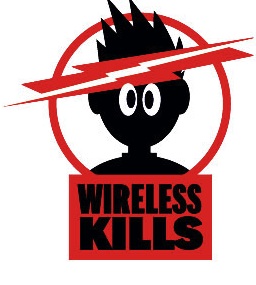Cell Phone Use Not Just Dangerous for Drivers, Study Finds
More than 1,500 pedestrians were estimated to be treated in emergency rooms in 2010 for injuries related to using a cell phone while walking, according to a new nationwide study.

The number of such injuries has more than doubled since 2005, even though the total number of pedestrian injuries dropped during that time. Researchers believe that the actual number of injured pedestrians is actually much higher than these results suggest.
“If current trends continue, I wouldn’t be surprised if the number of injuries to pedestrians caused by cell phones doubles again between 2010 and 2015,” said Jack Nasar, co-author of the study and professor of city and regional planning at Ohio State University. Nasar conducted the study with Derek Troyer, a former graduate student at Ohio State. It appears in the August 2013 issue of the journal Accident Analysis and Prevention.
The researchers used data from the National Electronic Injury Surveillance System, a database maintained by the U.S. Consumer Products Safety Commission (CPSC), which samples injury reports from 100 hospitals around the country. They examined data for seven years (from 2004 to 2010) involving injuries related to cell phone use for pedestrians in public areas.
A wide variety of injuries were reported. One 14-year-old boy walking down a road while talking on a cell phone fell 6 to 8 feet off a bridge into a rock-strewn ditch, suffering chest and shoulder injuries. A 23-year-old man was struck by a car while walking on the middle line of a road and talking on a cell phone, injuring his hip.
Nasar said a more accurate count of injuries to walkers might come from comparing distracted walking to distracted driving, which has been much more heavily studied. If the pedestrian numbers are similar to those for drivers, then there may have been about 2 million pedestrian injuries related to mobile phone use in 2010.
“It is impossible to say whether 2 million distracted pedestrians are really injured each year. But I think it is safe to say that the numbers we have are much lower than what is really happening,” Nasar said.
As might be expected, young people are the most likely to be injured by distracted walking. The 21- to 25-year-old age group led the way, with 1,003 total injuries during the seven years covered by this study. The 16- to 20-year-olds were not far behind, with 985 total injuries.
“As more people get cell phones and spend more time using them, the number of injuries is likely to increase as well. Now people are playing games and using social media on their phones too,” he said.
Nasar said he believes the best way to reverse these numbers is to start changing norms for cell phone use in our society. And that starts with parents. “Parents already teach their children to look both ways when crossing the street. They should also teach them to put away their cell phone when walking, particularly when crossing a street.”
 Due to popular demand, Stop Smart Meters! has created warning stickers to spread awareness about the hazards of ‘smart’ meters and other wireless technology. Much appreciation goes out to Zavier Cabarga for the design work.
Due to popular demand, Stop Smart Meters! has created warning stickers to spread awareness about the hazards of ‘smart’ meters and other wireless technology. Much appreciation goes out to Zavier Cabarga for the design work. What you don’t know CAN hurt you! By raising awareness with these visible and bold stickers, we hope to encourage people to take action to make their families and communities safer, and stand up for their rights.
What you don’t know CAN hurt you! By raising awareness with these visible and bold stickers, we hope to encourage people to take action to make their families and communities safer, and stand up for their rights.